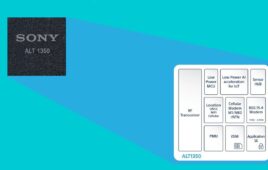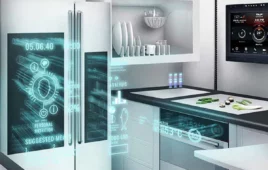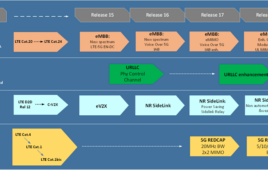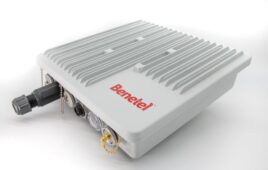It’s too early to break out the nails for NFC’s coffin. There are still plenty of uses for the technology. But NFC’s mobile payments aspirations look like they’ve suffered a death blow at the hands of Apple’s iBeacon, Bluetooth LE and PayPal.
Earlier in the summer, Apple quietly announced iBeacon at WWDC as it introduced the world to its freshly remodeled iOS 7. The iBeacon API will allow mobile applications to let an iOS device know when a Bluetooth LE-powered beacon is nearby. The geo-fencing feature in iBeacon will likely be used for mapping out large indoor areas but iBeacon’s proximal cloud is already showing up as in intriguing mobile commerce/payment solution.
Days before Apple released its new iPhones, PayPal introduced Beacon, a Bluetooth LE dongle that plugs into a power source and pings all compatible devices with the PayPal app that ![]() come within its range. If the PayPal user elects to check-in with their device, they can then pay via the app or voice command, essentially making for a hands-free, line-free shopping experience.
come within its range. If the PayPal user elects to check-in with their device, they can then pay via the app or voice command, essentially making for a hands-free, line-free shopping experience.
PayPal is demoing Beacon during the fourth quarter and plans for a wider rollout next year.
As tech advisor Steve Cheney pointed out back in August, the iOS 7 APIs are backwards compatible from the iPhone 4S up to the new iPhones, meaning that already 95 percent of iOS device users will be able to engage in mobile payments using iBeacon. Android 4.3 adds Bluetooth LE support but since only 30 percent of Android device users will be able to upgrade in the first year, Cheney argues that developers won’t yet bother with Bluetooth LE networking and mobile payment apps.
In light of iBeacon and Bluetooth LE, Cheney comes right out and calls time of death on NFC. That may be stretching it, but he makes a good point of how iBeacon replicates the NFC functionality with Bluetooth LE and Wi-Fi.
More than replicating, Bluetooth LE stands to simplify on the basic premise of NFC. Near Field Communication will essentially turn a connected device into a mobile wallet and enable a tap-and-pay solution at the point of sale. But forgoing the wallet and using a phone instead is really just shortening an existing step. Bluetooth LE, as shown with iBeacon and Beacon, has the potential to eliminate steps like waiting in line and searching for a phone/wallet all together.
With iOS 7 already hitting 200 million updates, iBeacon adoption is already heavily saturating the market. And if Apple hasn’t added NFC to its flagship phones by now—the new iPhone 5S and 5C don’t have it—it’s unlikely it ever will at this point.
Nitesh Patel, senior analyst of wireless media strategies at Strategy Analytics, isn’t giving up on NFC or a lot of other mobile payment options just because of iBeacons.
Patel said that iBeacons and Bluetooth LE will be trialed and could gain traction if it adds value for retailers, particularly in the U.S. where Apple enjoys a big market share. But the benefits need to be tangible for retailers in order for iBeacons to catch on, said Patel, citing LevelUp as a mobile payment solution that’s caught on some because it doesn’t charge retailers for transactions.
But on a global scale, Patel sees room for Bluetooth LE, NFC, QR and others as retailers figure out what works best for them.
“One thing is certain, iBeacon adds another innovative mobile payment method to the host of existing solutions, adding to complexity and fragmentation for consumers and retailers alike,” Patel said.




